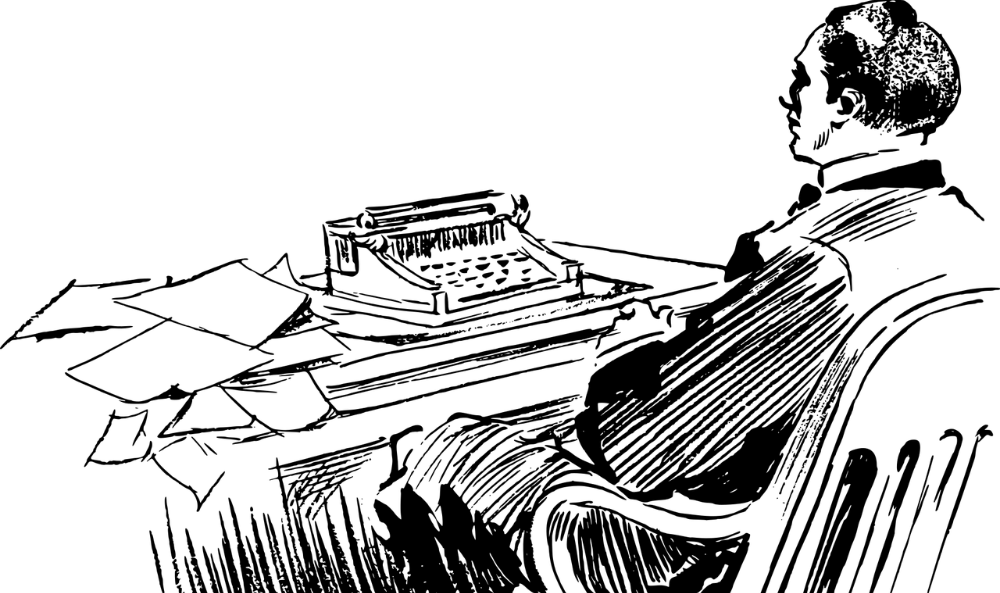It is not news that our Pacific Northwest has an abundance of bookshops, writers, publishers, and steady readers. Our far corner has long attracted literary characters, and some lingered, while others moved away.
A small sampling of several famous writers who are identified with our region includes Vernon Louis Parrington, Pulitzer-winning historian and author of the influential Main Currents in American Thought. While teaching at the University of Washington, Parrington tended his garden and vacationed near Kingston, Washington.
Betty MacDonald, another Pulitzer awardee, took the nation by storm with her folksy The Egg and I, followed by Onions in the Stew. Her years as a farmer’s wife near Chimacum, Washington on the Olympic Peninsula were re-cycled into the Ma and Pa Kettle film series. Added to the Pulitzer list, Oregon journalist H.L. Davis made an impression with his novel Honey in the Horn.
Big names who kept moving include Dashiell Hammet, the detective writer, who spent time as a patient in a Tacoma hospital and meandered around Seattle, allegedly in the guise of a Pinkerton detective. His novel The Thin Man set a standard for crime literature in America.
A great bear of a man, Thomas Wolfe, roamed western national parks, became ill in Seattle, and barely survived a long train journey to Baltimore’s Johns Hopkins Hospital where he died of tuberculosis of the brain. His legacy is a slight but enchanting A Western Journal, and such great tomes as the novel, Look Homeward, Angel.
Poet Theodore Roethke changed many student- and faculty lives at the University of Washington. His classes, like his personality, were soaring and unpredictable. Roethke took the Pulitzer for poetry.
Raymond Carver, once called America’s Chekhov, and his wife Tess Gallagher, chose Port Angeles, Washington as a base for their prodigious output of poetry and short stories. Carver’s grave on a high Port Angeles bluff (with room for Tess) gazes upon the tides, wind, sky, and islands of the Strait of Juan de Fuca.
Among those who passed through were Sinclair Lewis, author of Main Street, Elmer Gantry, and It Can’t Happen Here; Lewis checked into the Hotel Chelsea, now an apartment house on Seattle’s Queen Anne Hill in 1916. Mark Twain stopped off at Seattle’s waterfront while on a world tour as a lecturer. The Welsh poet Dylan Thomas, who befriended Roethke, drank and talked his way through a poetry reading at the University of Washington.
Historian and Lincoln biographer Carl Sandburg was called upon to give a talk and play his guitar at the 1962 Seattle World’s Fair. His talk was a success, but he left the stage without touching the lonely guitar. John Dos Passos, in his early radical years, visited the Pacific Northwest and described the labor movement and strife in Seattle, Everett, and Centralia.
Discover more from Post Alley
Subscribe to get the latest posts sent to your email.

Not to mention Nancy Wilson Ross, who was born in Olympia, lived here on Hood Canal, and taught at Cornish before running off in 1942 with her NYC publisher, Stanley Young, who was also a famous theater person. She wrote “The Farthest Reach” about WA and OR, became a famous novelist in her day (the 1950s) — “The Return of Lady Brace” was award-nominated for best fiction — helped found the Asia Society, and wrote a lot about Zen. My favorite title among her many novels is “The Left Hand Is The Dreamer.” What a nice notion to ponder!
Frank Herbert, author of Dune, was a P-I reporter, here:
https://seatoday.6amcity.com/frank-herbert-dune-seattle-wa
Mary McCarthy was born in Seattle and returned here to live with her grandparents, attending Garfield High School, and then Annie Wright Seminary before going on to Vassar (and fame).
https://www.marymccarthy.org/biography
Thanks for the reminder about these writers. But doesn’t Tennessee Williams and/or Thornton Wilder belong on this list after living in Seattle for a period on Magnolia Bluff?
Gregg Herrington
Eugene O’Neill lived briefly on Magnol. Don’t know about those other guys.